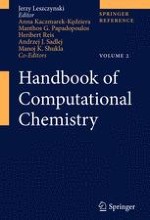2012 | OriginalPaper | Chapter
Directions for Use of Density Functional Theory: A Short Instruction Manual for Chemists
Authors : Heiko Jacobsen, Luigi Cavallo
Published in: Handbook of Computational Chemistry
Publisher: Springer Netherlands
Activate our intelligent search to find suitable subject content or patents.
Select sections of text to find matching patents with Artificial Intelligence. powered by
Select sections of text to find additional relevant content using AI-assisted search. powered by
